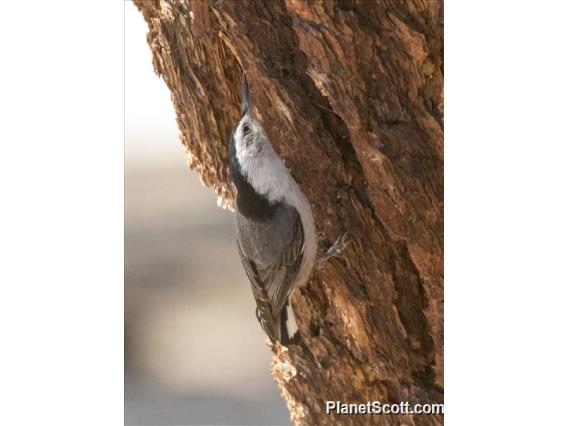White-breasted Nuthatch (Sitta carolinensis)

White-breasted Nuthatch (Sitta carolinensis)
×


White-breasted Nuthatch (Sitta carolinensis)
About White-breasted Nuthatch (Sitta carolinensis)
- Kingdom: Animals
- Phylum: Chordates
- Class: Birds
- Order: Perching Birds
- Family: Nuthatches
The white-breasted nuthatch is a species of bird in the nuthatch family Sittidae. It is a medium-sized nuthatch, measuring approximately 15.5 cm (6.1 in) in length. Coloration varies somewhat along the species' range, but the upperparts are light blue-gray, with a black crown and nape in males, while females have a dark gray crown. The underparts are whitish, with a reddish tinge on the lower abdomen. Despite not being closely related, the white-breasted nuthatch and the white wagtail are very similar in plumage.
Source: Wikipedia
Visits
-
-
2007-07-21
Burnidge Forest Preserve, United States of America -
2008-08-17
Ukiah, United States of America -
2008-08-26
Elgin - Bluff Spring Fen, United States of America -
2008-09-20
Emigrant Wilderness, United States of America -
2009-01-11
Burnidge Forest Preserve, United States of America -
2009-05-05
Elgin - Bluff Spring Fen, United States of America -
2009-11-07
Pinnacles National Monument, United States of America -
2010-01-16
Sugar Pine Point State Park, United States of America -
2010-02-01
Elgin - Bluff Spring Fen, United States of America -
2010-11-20
Elgin - Bluff Spring Fen, United States of America -
2011-10-08
Crabtree Nature Center, United States of America -
2012-07-08
Elgin, United States of America -
2012-07-08
Necedah NWR, United States of America -
2013-03-07
Spring Valley Nature Sanctuary, United States of America -
2013-06-15
Redwood Valley, United States of America -
-
-
2014-05-09
Cave Creek Canyon--Southwestern Research Station, United States of America -
2014-05-10
Cave Creek Canyon--South Fork, United States of America -
-
-
-
-
-
-
-
-
-
-
-
-
-
-
-
-
-





